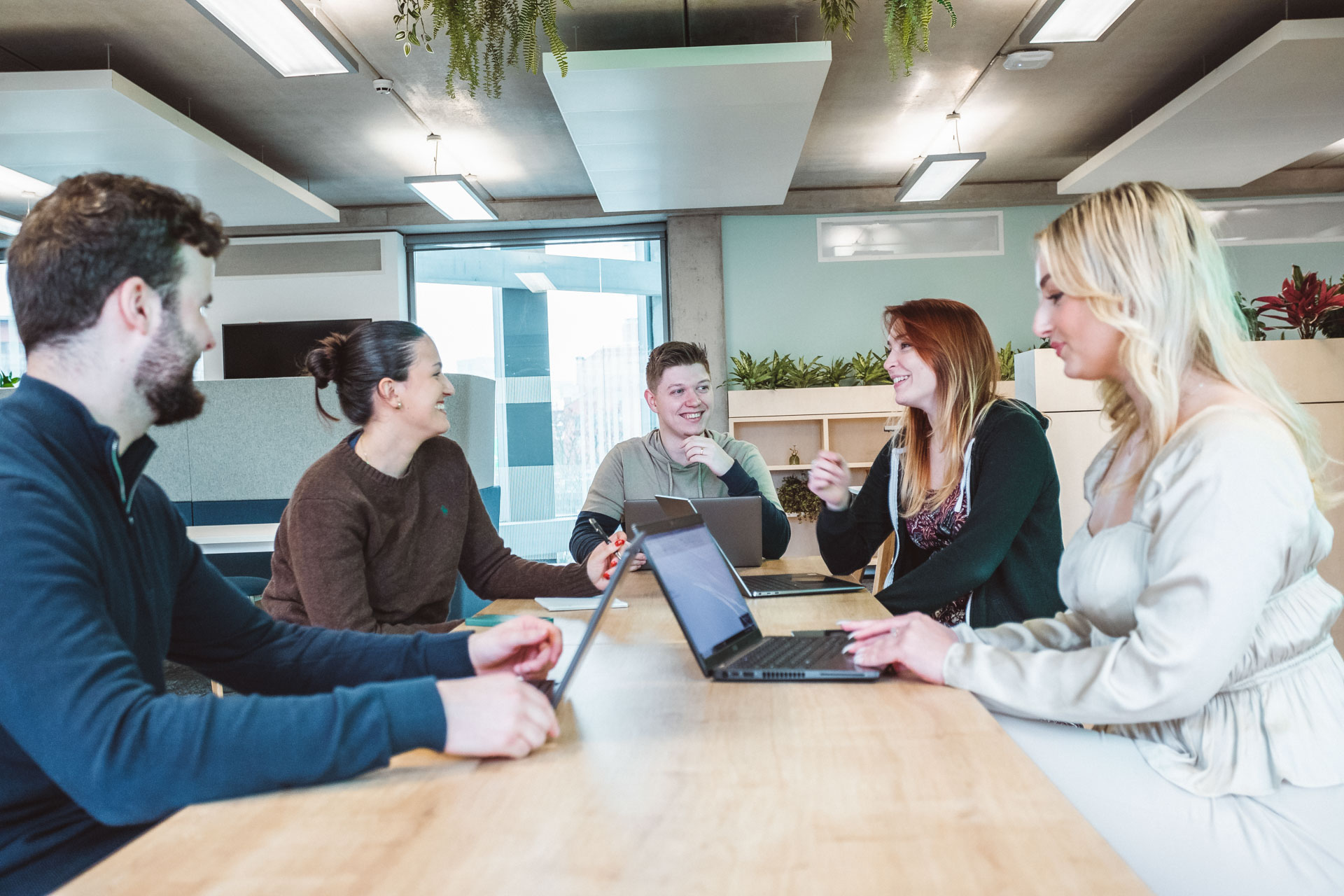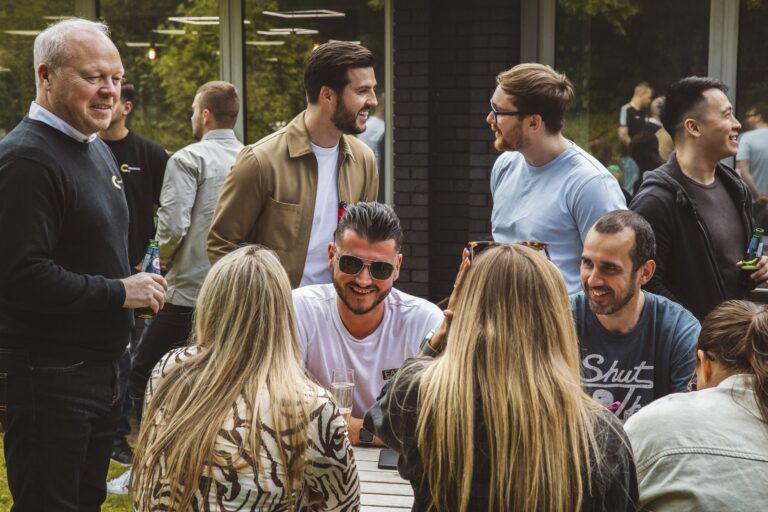
Is your workforce lonely? Why your organisation needs to act now.
Date
15 July 2024
Read length
8 min
There’s a loneliness epidemic sweeping the nation.
Thanks to the rise in remote working, the nation’s workers are losing their sense of connection with colleagues, friends, and employers. They are lonely, and employers need to act quickly.
As you’d expect, the problem was at its worst during the pandemic, with a staggering 43%[1] of workers saying they didn’t feel any connection with their colleagues at that time. While loneliness levels have fallen since it’s still a critical issue that employers cannot afford to ignore.
Research from the British Red Cross last year revealed that one in ten workers often or always experience loneliness at work, and nearly half feel lonely some of the time. And in minority groups, it’s even higher. Data from Race Equality Matters revealed that 76% of its LinkedIn community thought being in a marginalised group or minority can make you feel more lonely, while The British Cross found that disabled workers and those with long-term health issues are more than twice as likely to lack companionship and feel isolated at work.
The risks of leaving this unaddressed are serious. Loneliness and social disconnection are linked to serious health problems such as dementia, stroke, depression, heart disease, mental health issues and anxiety. Then there’s the impact on productivity. Disconnected and disillusioned workers are less productive, less loyal and more likely to be off sick. When groups of the workforce feel especially unseen, it can lead to divisive cultures, lost talent and non-inclusive workplaces.
Becky Turner, Claremont’s in-house workplace psychologist, said: “Tackling loneliness is essential for forward-thinking organisations keen to keep their people happy, healthy, and motivated. Part of the solution lies in designing and building inclusive workplaces and curating positive experiences that offer the social stimulation and connection missing for many remote workers.
“Today’s hybrid workers are looking for face-to-face collaboration, opportunities for relaxation and wellbeing, in-person training and development, and socialisation. Of course, technology allows all of these things to happen remotely via screens, but these aren’t a real substitute for a true face-to-face human experience.”
Becky added: “Much of the media narrative around the ‘return to the office’ has been about productivity and, in some cases, organisations’ lack of trust in employees, but one of the biggest drivers we’re seeing is that employers now recognise their responsibility to look after their people. Employers are enticing employees back to the office by making them feel supported, valued and able to thrive. As a result, office interior design has a very valuable role to play in making sure workplaces are up to the job.”
To address loneliness in the workplace, organisations need to revisit their culture and the kinds of pastoral care they offer, and crucially, to ensure their office interior design has created a social, collaborative, and inspiring place to be. Here are nine practical ways loneliness can be addressed in the workplace:
Create tech-free spaces
Tech-free zones within your workplace can remove barriers to conversation and emphasise the value of face-to-face interactions. While a positive workplace culture is needed to enforce guidelines like this, strategic office space planning to encourage face-to-face contact and facilitate through different activity-based working settings is also needed. Tech-free spaces could be included within an on-site café, selected breakout spaces, or training areas.

Create a programme of fun and social-led activities both in and out of the office.
Employees with friends at work are happier, more productive and more loyal, so creating opportunities for friendships to be formed is important. Activities could be as varied as weekly yoga, a games night, a crafters club in the office – or social nights out and sporting activities out of the office. Employees need to feel a sense of connection with each other, so ask them what activities and clubs they’d like to participate in. This can be supported further with flexible office interior design – including multi-functional spaces that can help team meetings and work tasks as easily as a yoga class.
Strike the balance.
Think about the organisation’s critical operational moments and how the week is organised. If in-person sales meetings take place every Thursday, what other people-focused activities could take place that day so there’s extra social benefit from being in the office? These might be social activities or training opportunities. The pay-off here is vast—not only does it give employees the social interaction they need, but they’re also getting an important dose of the brand.
Think about health and wellbeing and give employees access to holistic support.
Would an on-site counsellor help? Perhaps cooking classes could provide a fun way for employees to get to know each other and invest in their health and wellbeing. Work with an office interior designer to create amenities to boost health and wellbeing such as a dedicated wellbeing room, a garden space, a prayer room or a quiet space suited to those with neurodivergent needs. Other ways to improve wellbeing include managing acoustics, ensuring good access to light and fresh air and the use of planting.
Put collaboration and community at the heart of office interior design.

Call on office interior design experts to create offices that prioritise sociability and coming together. At Claremont, we talk about the Destination Office, a place employees seek out because it delivers on so many of their needs, from wellbeing – which can be achieved through spaces such as The Retreat – to collaboration, which is supported with spaces like the Co-Working Bureau, Library and Academy. Modern office design is based on understanding employees’ needs. It uses clever office space planning and the right office furniture to suit various work styles and preferences.
Make sure office design supports diversity and inclusion.
If you’re embarking on an office interior design project, be sure to consider the needs of your entire workforce – including, for example, wheelchair users, neurodivergent employees, the visually impaired, breastfeeding mums, and minority groups. In practical terms, this could mean widening doorways, including height-adjustable desks, creating quiet spaces, using clear signage and creating private faith spaces. Employees who feel seen and included are less likely to feel lonely. Modern office design should make the workplace inclusive and accessible for all.
Consider how CSR can combat loneliness.
Opening up the office to community groups can help employees feel more connected to the local community and each other. Allowing staff to volunteer with charities and community projects can build self-worth, help tackle isolation, forge friendships, and boost wellbeing.
Prioritise face-to-face learning

If we always find answers from technology rather than people, we remove another opportunity for human interaction. Prioritise in-person training and mentoring so people learn from each other, forging relationships as they go. This can be achieved by hosting on-site training days, one-to-ones and project meetings on-site rather than via Teams.
Loneliness is a serious issue for businesses in a hybrid era, and employers are responsible for looking after their employees’ health and wellbeing. As we’ve outlined, employers can provide pastoral and cultural support in significant ways, but they can also help by creating workplaces that deliver meaningful human experiences. Harnessing the power of effective office interior design is the key to creating spaces employees want to be in and giving them the collaborative and social ‘hit’ they need to thrive.
See how we could help with your new office interior design or office design and build project here.
[1] Betterup Report data from 2020 to 2022 in the US as quoted here: https://www.worklife.news/culture/why-employers-must-invest-in-workplace-relationships-to-avert-loneliness-epidemic/
See how we could help with your new office interior design or office design and build project here
Get in touch
We love nothing better than talking all things workplace and design – got a question, potential project or just need some guidance?
Drop us a note…





